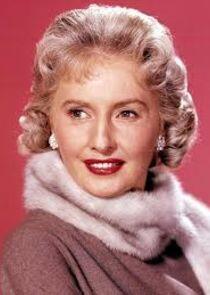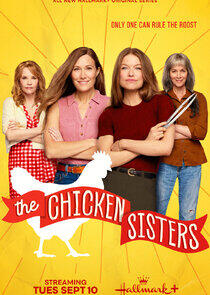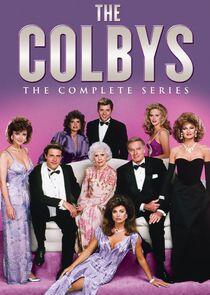
Barbara Stanwyck
Orphaned at the age of four and partially raised in foster homes, she always worked. One of her directors, Jacques Tourneur, said of her, "She only lives for two things, and both of them are work." She made her debut on stage in the chorus as a Ziegfeld girl in 1923 at age 16, and within a few years was acting in plays. Her first lead role, which was in the hit Burlesque (1927), established her as a Broadway star. In 1929, she transitioned from the stage to the film industry, and began acting in talking pictures. Frank Capra chose her for his romantic drama Ladies of Leisure (1930), and Stanwyck later became a favorite of Capra’s, leading to another three collaborations. This led to additional leading roles which raised her profile, such as Night Nurse (1931), Baby Face (1933), the controversial The Bitter Tea of General Yen (1933), and Gambling Lady (1934).
By the late 1930s, Stanwyck had moved to more mature roles in critically and commercially successful comedies and dramas. For her performance as the titular character in Stella Dallas (1937), she earned her first Academy Award nomination for Best Actress. In 1941, she starred in two screwball comedies: Ball of Fire with Gary Cooper, and The Lady Eve with Henry Fonda. She received her second Academy Award nomination for Ball of Fire, and in the decades since its release, The Lady Eve has come to be regarded as a comedic classic, with Stanwyck's performance widely hailed as one of the best in American comedy. Other successful films during this period are Remember the Night (1940), Meet John Doe (1940) and You Belong to Me (1941), reteaming her with Cooper and Fonda, respectively, The Gay Sisters (1942), and Lady of Burlesque (1943).
By 1944, Stanwyck had become the highest-paid actress in the United States. That year, she received a third Academy Award nomination for Best Actress in the film noir Double Indemnity, playing a wife who persuades an insurance salesman to kill her husband. In 1945, she played a homemaker columnist in the holiday classic Christmas in Connecticut, and the following year, starred as the titular femme fatale in The Strange Love of Martha Ivers. For the remainder of the decade, Stanwyck starred in additional successes ranging from romantic dramas and comedies, to suspenseful, crime-noirs. Her films during this period include My Reputation (1946), The Two Mrs. Carrolls (1947), Sorry, Wrong Number (1948), for which she received her fourth and final Academy Award nomination, and East Side, West Side (1949). By the early 1950s, Stanwyck’s career began to decline, despite a fair number of leading and major supporting roles, the most successful being Clash by Night (1952), Jeopardy (1953), and Executive Suite (1954). In the 1960s, Stanwyck had made a successful transition to television, where she won three Emmy Awards, for The Barbara Stanwyck Show (1961), the Western series The Big Valley (1966), and the miniseries The Thorn Birds (1983).
She received an Honorary Oscar in 1982, the Golden Globe Cecil B. DeMille Award in 1986, and several other honorary lifetime awards. She was ranked as the 11th-greatest female star of classic American cinema by the American Film Institute.
Biography from the Wikipedia article Barbara Stanwyck. Licensed under CC-BY-SA. Full list of contributors on Wikipedia.
Known For
Recently Updated Shows

Robin Hood
Robin Hood is described as a sweeping, romantic adventure, a modern take of the classic tale that brings historical authenticity, psychological depth, and a heightened focus on the relationship between Rob and Marian.
In the series, following the Norman invasion of England, Rob – a Saxon forester's son – and Marian, the daughter of a Norman lord – fall in love and work together to fight for justice and freedom. As Rob rises as the leader of a band of rebel outlaws, Marian infiltrates the power at court, as both work together to thwart royal corruption and bring peace to the land.

The Chicken Sisters
The Chicken Sisters is a family drama dipped in southern charm and served up with a saucy side of romance. The setting is the fictional town of Merinac, where a generations-old rift between dueling fried chicken restaurants – Mimi's and Frannie's – has left the founders' families fractured and the locals taking sides. When popular cooking competition show Kitchen Clash comes to town, this could be the recipe for ending this feud once and for all. But things are fixing to heat up both inside and outside of the kitchen as the reality show spotlight causes sparks to fly as secrets are spilled and feathers get ruffled.

Survivor
Eighteen to twenty castaways will compete against each other on Survivor. All castaways will compete to outwit, outplay, outlast and ultimately be crowned Sole Survivor.

The Walking Dead: Dead City
The Walking Dead: Dead City envisions the popular Maggie and Negan characters travelling into a post-apocalyptic Manhattan long ago cut off from the mainland. The crumbling city is filled with the dead and denizens who have made New York City their own world full of anarchy, danger, beauty, and terror.



